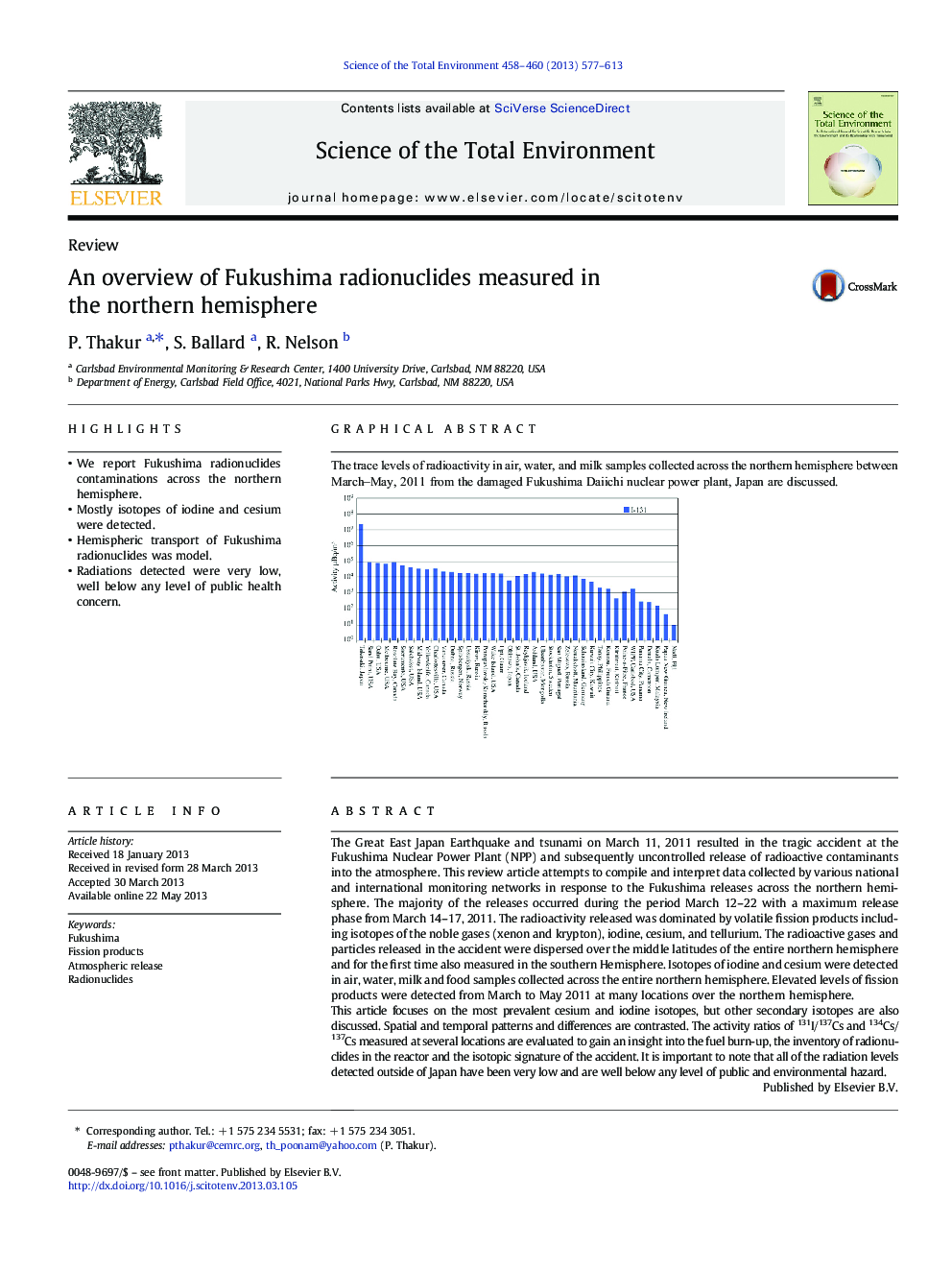| کد مقاله | کد نشریه | سال انتشار | مقاله انگلیسی | نسخه تمام متن |
|---|---|---|---|---|
| 4428663 | 1619800 | 2013 | 37 صفحه PDF | دانلود رایگان |

• We report Fukushima radionuclides contaminations across the northern hemisphere.
• Mostly isotopes of iodine and cesium were detected.
• Hemispheric transport of Fukushima radionuclides was model.
• Radiations detected were very low, well below any level of public health concern.
The Great East Japan Earthquake and tsunami on March 11, 2011 resulted in the tragic accident at the Fukushima Nuclear Power Plant (NPP) and subsequently uncontrolled release of radioactive contaminants into the atmosphere. This review article attempts to compile and interpret data collected by various national and international monitoring networks in response to the Fukushima releases across the northern hemisphere. The majority of the releases occurred during the period March 12–22 with a maximum release phase from March 14–17, 2011. The radioactivity released was dominated by volatile fission products including isotopes of the noble gases (xenon and krypton), iodine, cesium, and tellurium. The radioactive gases and particles released in the accident were dispersed over the middle latitudes of the entire northern hemisphere and for the first time also measured in the southern Hemisphere. Isotopes of iodine and cesium were detected in air, water, milk and food samples collected across the entire northern hemisphere. Elevated levels of fission products were detected from March to May 2011 at many locations over the northern hemisphere.This article focuses on the most prevalent cesium and iodine isotopes, but other secondary isotopes are also discussed. Spatial and temporal patterns and differences are contrasted. The activity ratios of 131I/137Cs and 134Cs/137Cs measured at several locations are evaluated to gain an insight into the fuel burn-up, the inventory of radionuclides in the reactor and the isotopic signature of the accident. It is important to note that all of the radiation levels detected outside of Japan have been very low and are well below any level of public and environmental hazard.
The trace levels of radioactivity in air, water, and milk samples collected across the northern hemisphere between March–May, 2011 from the damaged Fukushima Daiichi nuclear power plant, Japan are discussed.Figure optionsDownload as PowerPoint slide
Journal: Science of The Total Environment - Volumes 458–460, 1 August 2013, Pages 577–613